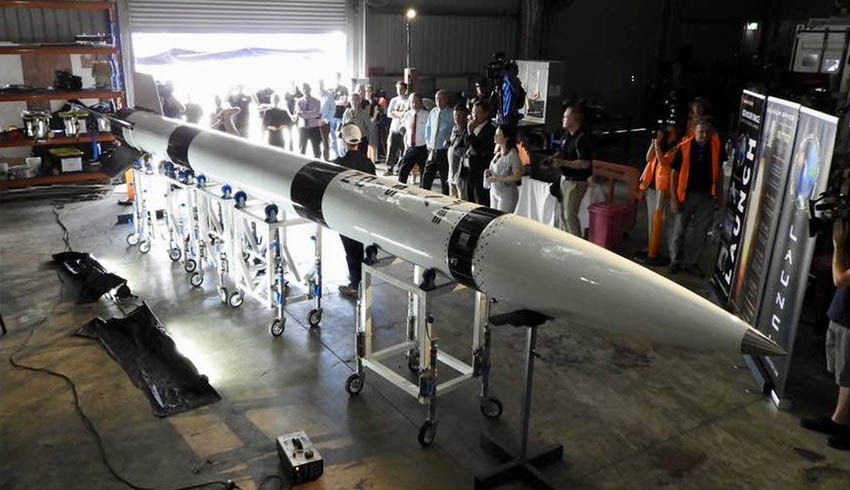His vision features providing a low cost satellite launch capability from Australia and eventually participation in moon and deep space missions.
This trial launch in May will open the way for a start of commercial launches, with the first planned for 2021.
Mr Gilmour, chief executive officer and founder of Gold Coast and Singapore-based Gilmour Space Technologies said hired from overseas and Australia to establish a solid rocket industry in Australia.
“We are scheduled to launch now somewhere around the last week of May. We have spent a bit longer than we thought doing some of the software commissioning,” he said.
“Things are going fine. We haven’t uncovered any major issues. It has just taken longer than we thought. We think we can start heading out to site around May 17 to 20 and then launch after that.”
This is the single stage One Vision rocket with the same engine to be used to power the proposed orbital launches.
The company’s first launch was in July 2016 with the blastoff of the prototype “reusable ascent separation article” (RASTA) which reached a height of about 5000 metres.
This next flight won’t go too high. Under current regulations any flight above 100 kilometres requires very expensive insurance.
“So we deliberately designed the rocket to go under 100 kilometres,” he said.
“It is testing a lot of different technologies. It’s not just the engine. It’s the fuel tank, the pressurisation tanks. We have made a very sophisticated mobile launch platform which we think has good applications in the future. Avionics and software we are testing.”
The actual site for this launch hasn’t been disclosed, other than that it’s from a property south of Mount Isa. Mr Gilmour said he wanted to achieve a capacity to place payloads of 400 kilograms into orbit aboard its Eris rocket.
“That will cover all of the big broadband constellations going up, most of the small sat market and many defence related satellites as well.
“As soon as this rocket is launched we are very heavily working on the orbital vehicle and we will be building an orbital rocket in Queensland.”
Australia has long boasted of its space history. The launch of the WRESAT in 1967 made Australia the third country on earth to actually launch a satellite from its own territory and the seventh to launch a satellite.
Mr Gilmour said we really didn’t do that much as it was a British rocket.
“We basically said here’s our backyard, so we will be the first Australian entity to launch a rocket into space,” he said.
Australian space company SAS is proposing to create a constellation of communications nano-satellites each weighing around 10 kilograms aboard European Ariane or US Rocket Lab launches.
But Mr Gilmour said there was more business in launching larger payloads, weighing from 50 kilograms up to 400 kilograms.
“….which is where we think the bulk of our revenue is going to come from,” he said.
“We can still take them (nano-satellites) up but it is not where we see the big revenue opportunities,” he said.
As for launch frequency, the company is proposing to start with 12 a year.
“Some of our competitors are saying they are going to launch once a week or every three days and we think that is totally unrealistic. A good steady state is 12 times a year and we are going to build from there,” he said.
The next question is where from?
“We are discussing with the Queensland state government about getting an orbital launch site set up in Queensland. A few of the other states have also started working on orbital launch sites,” he said.
“Our preference is for Queensland but for test launching we could use the Northern Territory or South Australian sites.”

